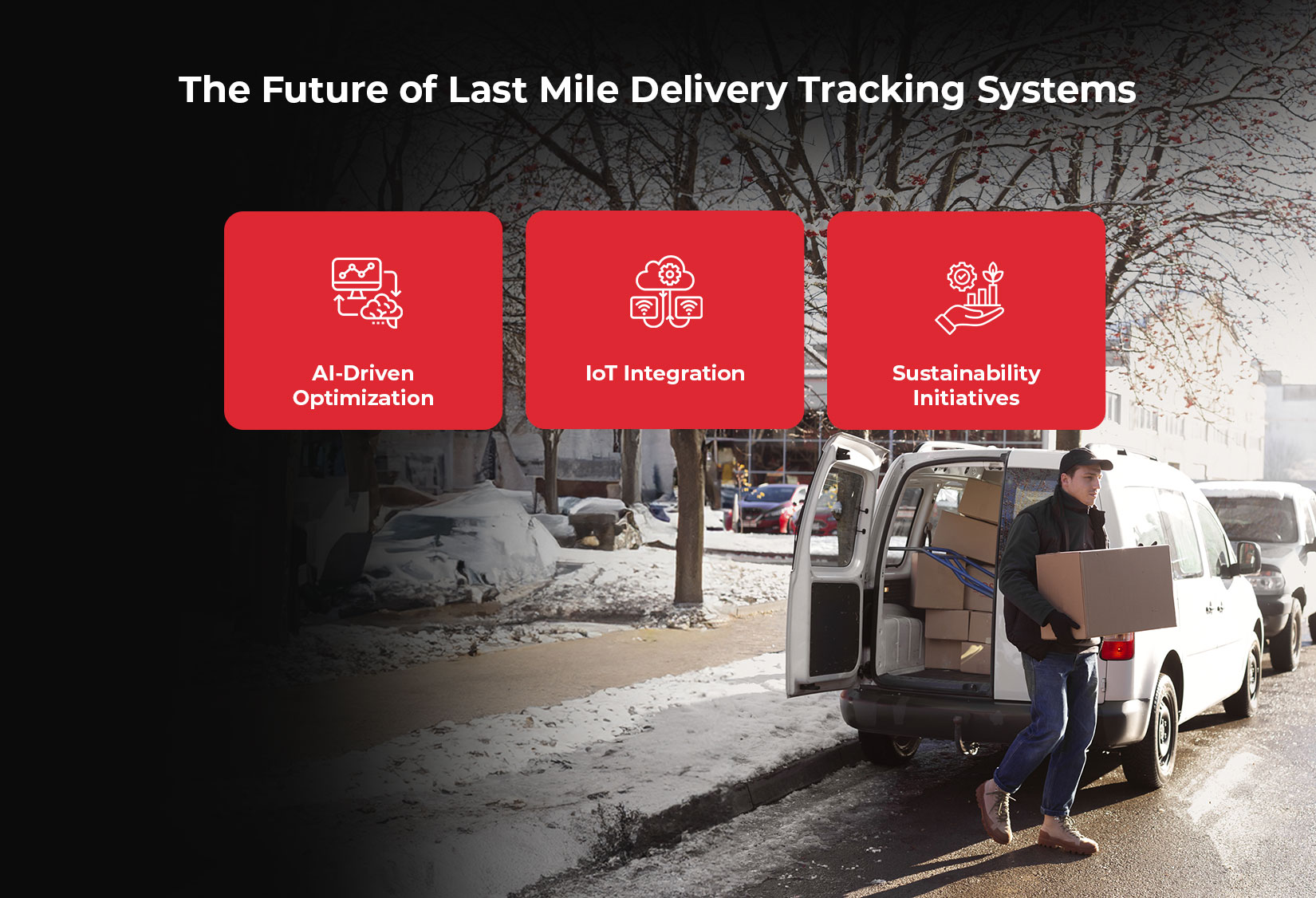The world of logistics and supply chain management is no stranger to pressure. Whether it’s peak shopping seasons, unexpected demand surges, or tight deadlines, crunch time is when businesses face their toughest tests. Amid these challenges, last mile delivery tracking software emerges as a game-changing solution, enabling companies to optimize operations, enhance customer satisfaction, and stay ahead of the competition.
According to a report by McKinsey, the last mile accounts for over 50% of total delivery costs, making it the most expensive and complex segment of the supply chain. As e-commerce continues to boom, global online sales are projected to reach $6.3 trillion by 2024. Businesses need robust tools to manage rising delivery volumes while maintaining speed and accuracy. GPS-enabled last mile delivery tracking software provides the much-needed edge during crunch time. This ensures seamless delivery experiences for customers and cost-efficiency for businesses.
Benefits of Using the Best Last Mile Delivery Tracking Software

1. Enhanced Customer Experience:
Customer satisfaction is critical, especially during crunch time. Late deliveries or inaccurate ETAs can frustrate customers and damage your brand. The best last mile delivery tracking software empowers businesses to send accurate delivery timelines, automated notifications, and live tracking links to customers. With 82% of consumers stating that delivery speed influences their purchase decisions, real-time tracking helps businesses meet customer expectations effortlessly.
2. Optimized Routes and Reduced Costs:
Inefficient routing is one of the biggest cost drivers in last mile delivery. GPS-enabled systems use advanced algorithms to identify the fastest, most fuel-efficient routes. This optimization reduces travel time, minimizes fuel consumption, and enables drivers to complete more deliveries per route. In fact, companies using GPS-enabled last mile delivery tracking software have reported cost savings of up to 15% on operational expenses.
3. Scalability During Demand Surges:
When demand spikes, manual planning can quickly become unsustainable. Automated last mile delivery tracking systems can scale to handle thousands of deliveries without compromising accuracy. During crunch times like the holiday season, companies equipped with advanced systems can process up to 20% more orders compared to their competitors relying on traditional methods.
4. Improved Driver Efficiency:
Drivers are at the heart of last mile operations. Providing them with a user-friendly platform that includes optimized routes, real-time updates, and efficient task allocation ensures higher productivity. Businesses leveraging last mile delivery tracking systems report a 30% increase in driver efficiency during peak periods.
5. Real-Time Updates:
Real-time visibility into deliveries helps businesses identify delays, reroute shipments, and communicate changes effectively. The ability to provide customers with live updates on their package status significantly reduces anxiety and enhances satisfaction. Real-time alerts also enable companies to address delivery issues proactively, maintaining operational efficiency.
Industry Success Stories
Several companies have successfully navigated crunch time challenges by implementing advanced tracking solutions:
Amazon:
Known for its Prime delivery network, Amazon uses its proprietary last mile delivery tracking system to fulfill over 1.5 million packages daily during peak seasons. The real-time updates and optimized routing ensure the company meets its one- and two-day delivery promises.
Domino’s Pizza:
Using GPS-enabled last mile delivery tracking software, Domino’s ensures that customers know exactly when their pizzas will arrive. This feature has boosted customer satisfaction rates by 30% while increasing delivery speed.
The Future of Last Mile Delivery Tracking Systems

The logistics industry is evolving rapidly, with new technologies enhancing last mile delivery operations. Artificial intelligence (AI), Internet of Things (IoT), and advanced analytics are set to further transform how deliveries are tracked and managed.
1. AI-Driven Optimization:
AI-powered tools predict traffic patterns and weather conditions to enhance route planning.
2. IoT Integration:
Sensors and IoT devices enable real-time updates on package conditions, ensuring sensitive goods like food or medicines are delivered without damage.
3. Sustainability Initiatives:
With growing emphasis on green logistics, last mile tracking systems now incorporate carbon footprint tracking, helping businesses align with eco-friendly practices.
Choosing the Right Last Mile Delivery Tracking Software
When selecting a solution, businesses should prioritize features like real-time tracking, route optimization, and integration capabilities. A reliable last mile delivery tracking system with real-time updates addresses crunch time challenges. It also sets the foundation for long-term success.
Key considerations include:
– Scalability: Can the system handle high delivery volumes?
– User Experience: Is the interface intuitive for drivers and customers?
– Analytics: Does it offer actionable insights to improve future deliveries?
Investing in the best last mile delivery tracking software is not just about surviving crunch time. It’s also about thriving in an increasingly competitive landscape.
Conclusion
Crunch time in logistics is a test of preparedness, efficiency, and innovation. Businesses equipped with GPS-enabled last mile delivery tracking software can overcome challenges with ease. Thereby, ensuring timely deliveries, cost savings, and enhanced customer satisfaction. With the demand for reliable last mile delivery solutions growing, investing in the right technology is not a luxury—it’s a necessity.
In an era where customer expectations are higher than ever, a robust last mile delivery tracking system ensures your operations stay resilient and agile. It also keeps your operations customer-focused, no matter how challenging the circumstances. Click on the red button below and book a demo with LogiNext.
6





















